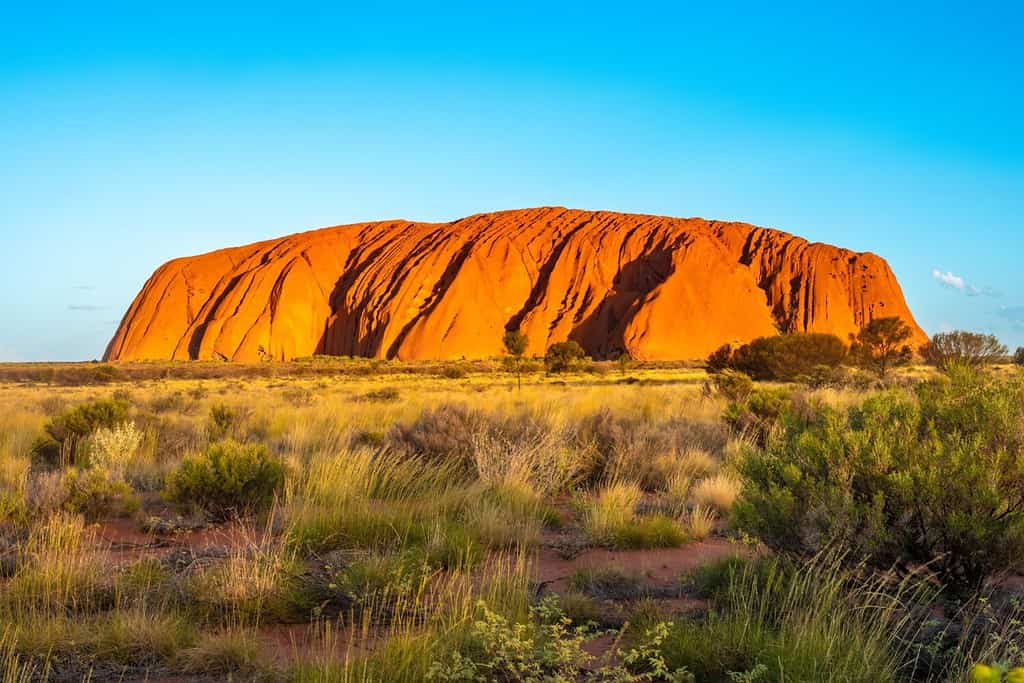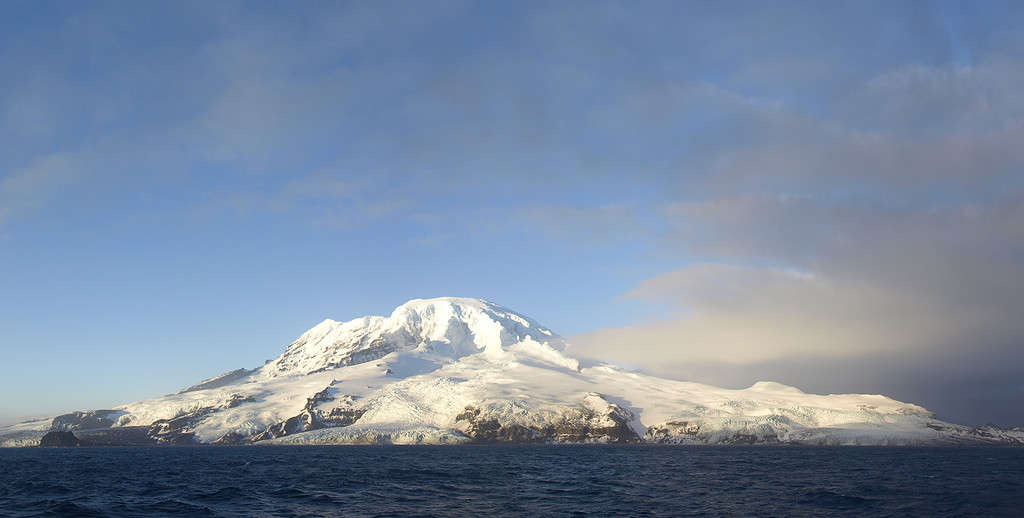Australia is a unique island, floating between the southern Indian Ocean and the expansive Pacific Ocean as the only continent that is a single country. Compared to the rest of the world, it is the sixth-largest country and smallest continent worldwide. But how big is Australia, exactly? Read on to learn about Australia’s size in miles, kilometers, and acres, and see how it compares to other countries around the globe.

Australia is home to many diverse climates and geographical features, like Uluru, a sandstone monolith (pictured here).
©LouieLea/Shutterstock.com
Large and diverse, Australia is home to climates ranging from arid deserts in the center to dense tropical rainforests closer to the equator. The country is best known for its highly unique animal species, including thousands of birds, mammals, fish, reptiles, insects, and marsupials. The kangaroo, koala, wallaby, and platypus are found in the wild only in the country, as are plants such as many eucalyptus and acacia species. Australia’s massive land size has room for its plentiful diversity, as we’ll explore below.
How Big is Australia?
The following table compares Australia’s size in acres, square miles, and square kilometers for an easy breakdown.
| Acres | Square Miles | Square Kilometers |
|---|---|---|
| 1,900,000,000 | 2,970,000 | 7,700,000 |
How Many Acres Is Australia?
One can compute the total acreage of Australia with the understanding that 1 square mile equals approximately 640 acres. Australia encompasses approximately 2.97 million square miles, which factors into roughly 1.9 billion acres.
For context, one acre is roughly the size of an American football field. So, the country is roughly 1.9 billion football fields laid adjacent to one another.

Covered in forests, plains, and deserts, Australia is roughly 1.9 billion acres.
©Galumphing Galah/Shutterstock.com
How Many Square Miles or Square Kilometers?
When measuring the size of Australia in other units, the continent is an estimated 2.97 million square miles or roughly 7.7 million square kilometers. However, this is the total area of Australia’s landmass, and its size can be measured in other ways.
Traveling from the furthest east to the westernmost point on the island measures 2,508 miles long, or 4034 kilometers. From Sydney to Perth — both coastal cities — the drive would take roughly 41 hours without stopping. The north and south shore span 1,912 miles or 3088 kilometers from each other. And a drive around Australia’s coastline perimeter would take a road-tripper 34,218 miles to make a full circuit or 55,058 kilometers.
How Big Is Australia Compared to the United States?
Australia is a massive country with a total square mileage that’s only slightly less than that of the United States. Its size is about 2.97 million square miles, while the United States’ total land mass clocks in at a slightly greater 3.797 million square miles. By comparison, the country “Down Under” is the world’s sixth-largest country, while the United States is the fourth-largest.
Alaska is the U.S. state closest in size to Australia and the largest state in the country, with a total area of approximately 665,400 square miles.

Heard Island is an external territory of Australia.
©Tristannew (original)Derivative: SHB2000 (cropped), CC BY-SA 4.0 <https://creativecommons.org/licenses/by-sa/4.0>, via Wikimedia Commons – License
Compared to Canada?
Canada sprawls over an impressive 3.955 million square miles north of the United States and stretches toward the North Pole. Conversely, Australia is slightly smaller at 2.97 million square miles.
Both countries were formerly British colonies and still are part of the Commonwealth. Canada’s population is about 38.25 million people, while Australia has around 25.7 million people total.
Compared to Europe?
Europe is the second-smallest continent in the world, only slightly larger than Australia’s entire island. In total, Europe covers 3.93 million square miles, contributing to about 2% of Earth’s surface area and 6.8% of its land mass. Australia is slightly smaller but still would cover most of Europe if the country laid over the latter on a map.
Compared to Russia?
Russia is the world’s largest country by landmass and the largest country in Asia, though about 23% of the country’s territory is considered to be in Europe. Russia is roughly 6.6 million square miles in land area, more than twice as big as Australia’s 2.97 million square miles. Population-wise, Russia is home to nearly five times as many people, with 143.4 million people, compared to Australia’s 25.7 million population.

Koalas are one of Australia’s most beloved native species.
©rickyd/Shutterstock.com
Animals that Live in Australia
Australia is world-renowned for its unique and diverse ecology of fascinating animal species, including massive insects and marsupials, among many others. Some famous animals for which the country is known include:
The Bottom Line
Australia may be the smallest continent in the world, but its massive size adds up to its ranking as the sixth-largest continent worldwide. It spans 1.9 billion acres, 2.97 million square miles, or roughly 7.7 million square kilometers.
The photo featured at the top of this post is © iStock.com/Andrew Coleman
Thank you for reading! Have some feedback for us? Contact the AZ Animals editorial team.






